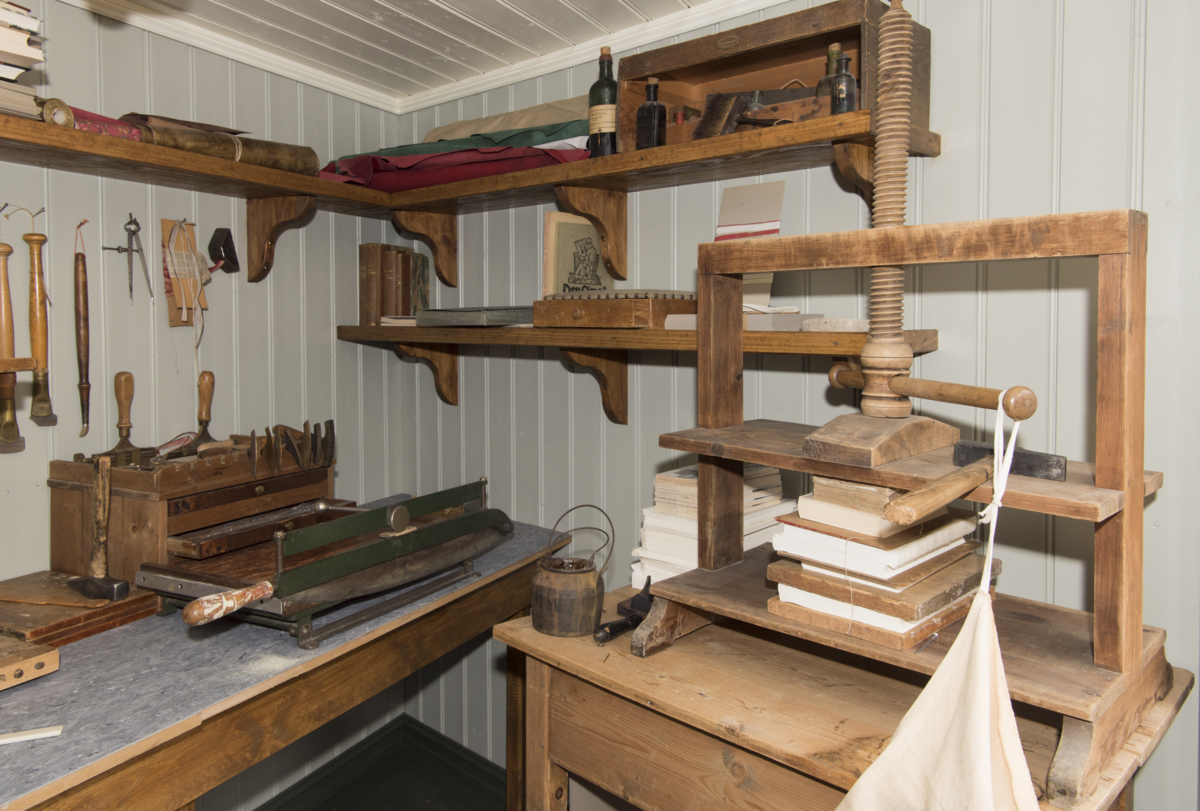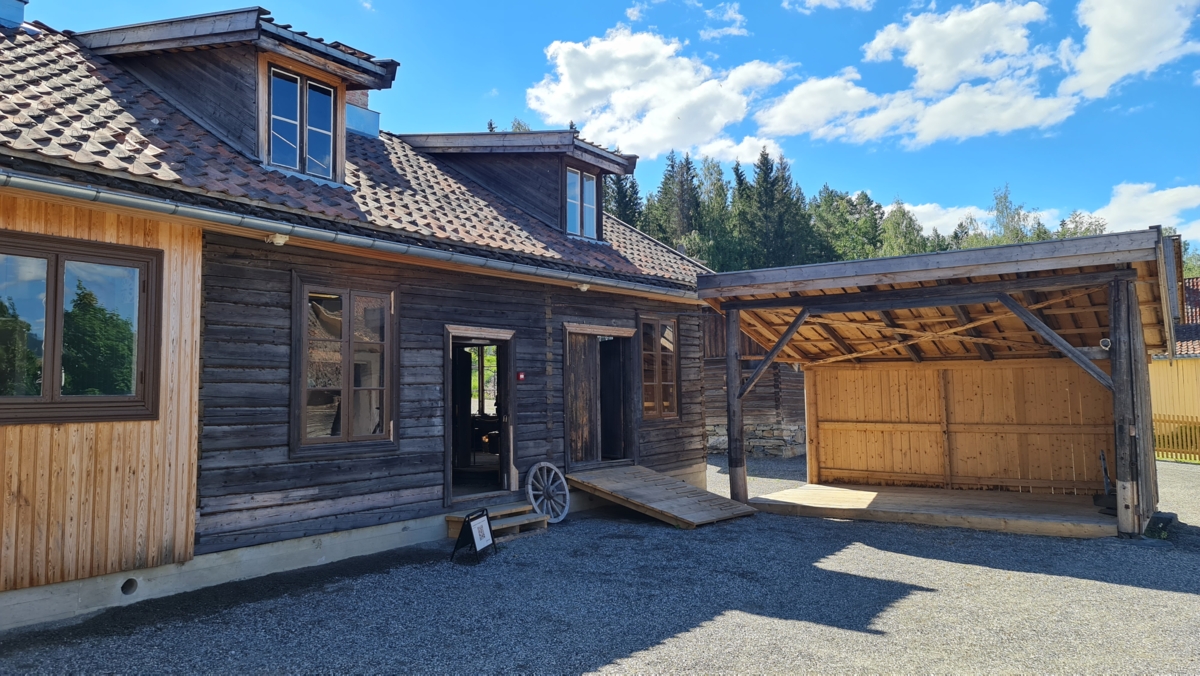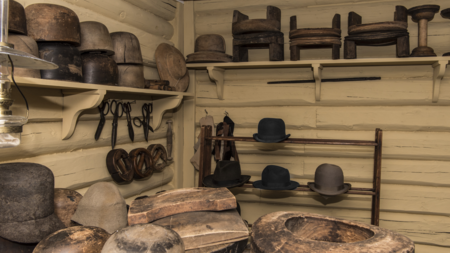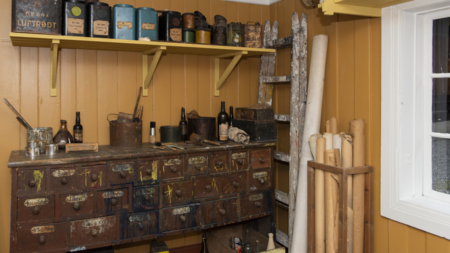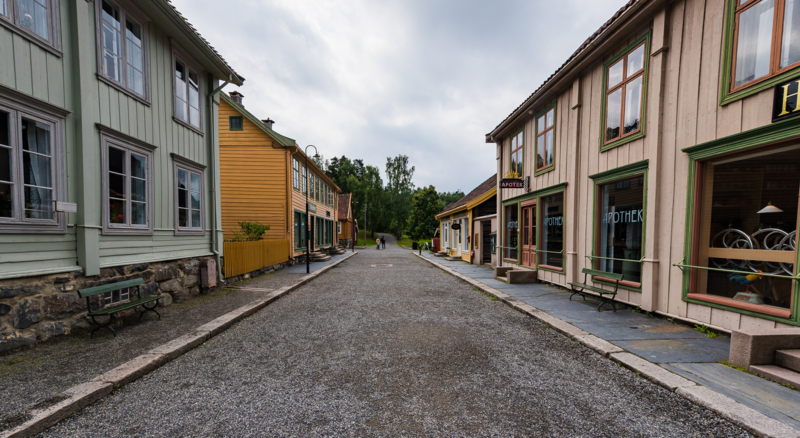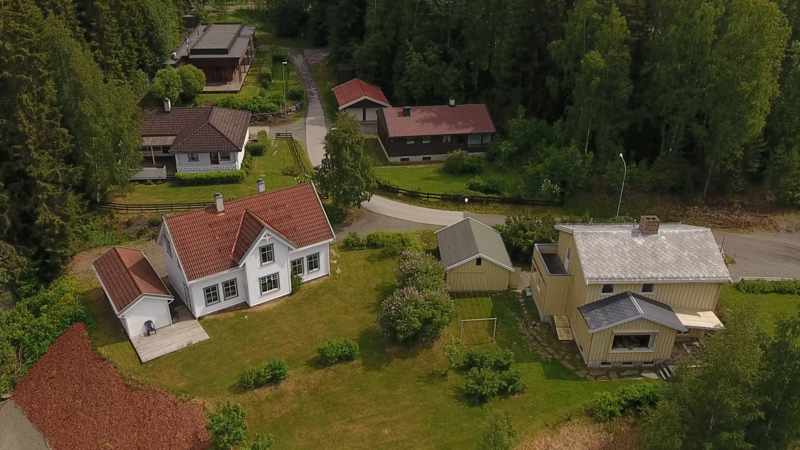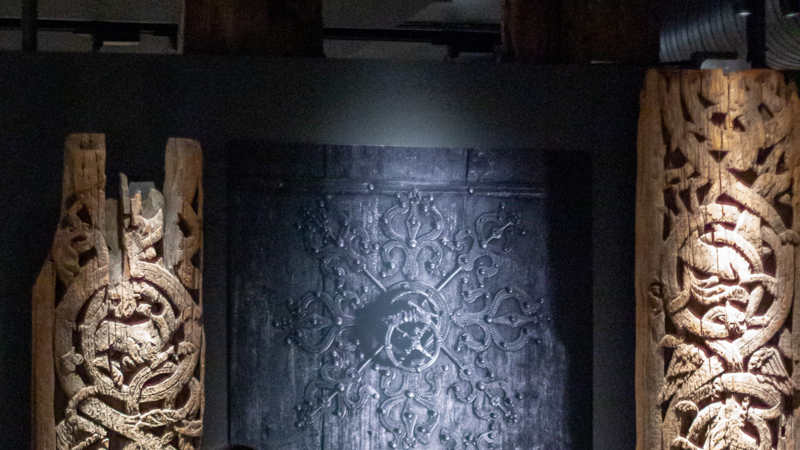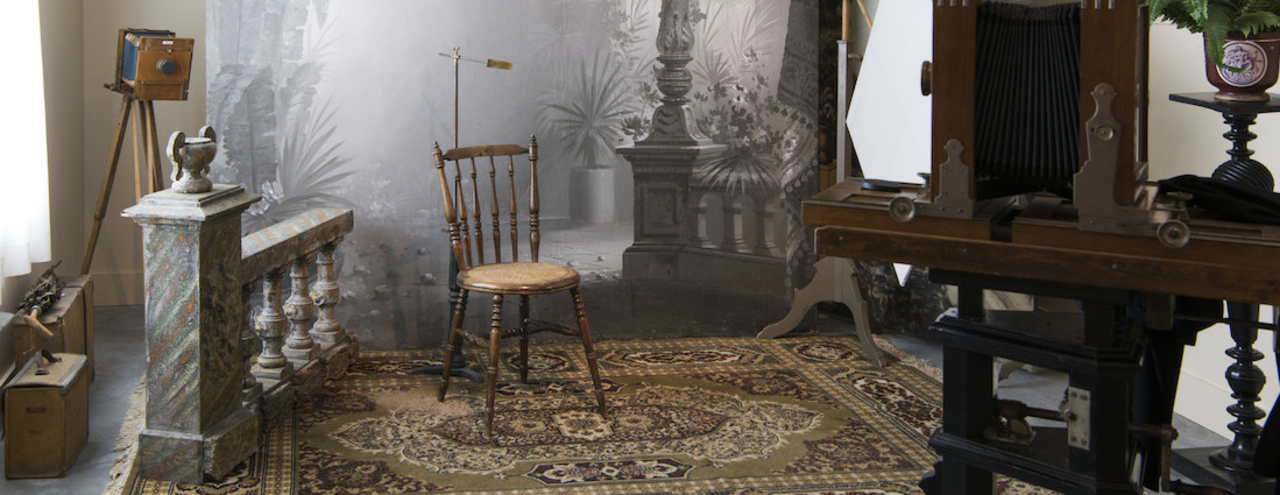
Workshops
All day, limited availability during the winter season
There are many authentic workshops in the open-air museum. Some you can enter, and during the summer, several are open to the public.
The Brass moulder's workshop
Brass moulder Lars Knutrud (1856-1947) belonged to an old brass moulder (Gjørtler) family, he ran his business at Storgata 132, Lillehammer. The workshop building came to Maihaugen in 1948 and was erected with fixtures as it was before the move. Knutrud had at most 2 apprentices and an apprentice in his workshop, he often participated in exhibitions and won many awards. Some of the diplomas hang in the office together with a selection of what he produced. Of what was produced we can mention, cow horn buttons, ear tags for fairies, door and furniture fittings, buttons for clothes, chandeliers (browse to the Dominican Church in Oslo), farm bells, and church bells. Clocks were delivered to, among others, Saksumdal church, Marcello Haugen, and the Eidsvoll building.
The Photo Studio
Enter the workshop of a photographer around 1900. Photography was a time-consuming process. In the studio you will see what equipment the photographers used.
The Bookbindery
The bookbindery contains equipment and tools for traditional handbinding from the first half of the 20th century. In the bindery you can see how a book was made from the sheets came from the print shop until the book was finished with spine and covers.
The Gaukstad smithy with shoe stable
The Blacksmith filled many tasks in the town, from the production of locks and fittings for shoeing horses.
Sigvart Gaukstad (1868–1937) was rewarded with a citizen letter for his craft works as a blacksmith, saddler, and wheel-wright in 1892. He built this smithy and workshop in Tomtegata 5 at Lillehammer. His son, Sverre Gaukstad (1900–1980), took over the smithy in 1937 and ran it until 1970. His older brother, Kristian, born in 1895, ble became a shoemaker and had his workshop in the northern part of this workshop building.
The Foundry
The foundry was originally part of the backyard environment at Nordregate 14, Lillehammer. Johannes Olsen sold this block of flats in 1931, he made bells and water taps, and in recent years he specialized in brass signets which he sold all over the country. The foundry was moved to Maihaugen in 1943.
The foundry was used as a casting room for the pottery business, the building is small and there was probably a separate workshop in another building. In the foundry, there are ace and bellows, coal and molds filled with sand. The brass is melted in a crucible in the foundry. The liquid metal is poured into a sand form. After the alloy has solidified, the object is polished and ground in the workshop.
The brass moulders had their heyday in the 18th and 19th centuries, this was a continuation of the button casting profession. The potter produces smaller objects such as candlesticks, chandeliers, parts for floor clocks, household utensils, buckles, and buttons made of metal - preferably brass and bronze. Some mudsmiths also worked as silversmiths, even though it was illegal. Many mud farmers were householders who worked on the side with forestry or farming.
Fåberg and Lillehammer were a center for the clay pottery business in the country, we find over 40 names who have operated clay pottery business to a greater or lesser extent.
The Tailor
Earlier, the tailor trade was one of the most common crafts. Today, tailoring is considered exclusive. In the tailor's workshop at Maihaugen you will see equipment and tools at a tailor in the period after 1945.
The Tinsmith’s workshop
In the tinsmith’s workshop you find tools from the turn of the 20th century. Tinsmiths produced lanterns, buckets, strainers, pots, funnels, etc. The largest workshops could offer over hundred different items.
The Hairdresser and barber shop
At the hairdresser there is equipment and interior in a hairdresser and barber shop from around the 1930s.
The Hatter
At the hatter's workshop, you may see how felt hats were made in the period before 1910.
The painting workshop
In the painting workshop, you can see equipment and tools painters at Lillehammer used in the period 1880 to 1930. They painted mainly houses, but also furniture, posters and decoration. Besides all that a painter needed in his work, you can also see different techniques like painting grain, marbling and stencil paint in this workshop.
See all of Maihaugen's exhibtions.
More activities in the Daily program calendar.

